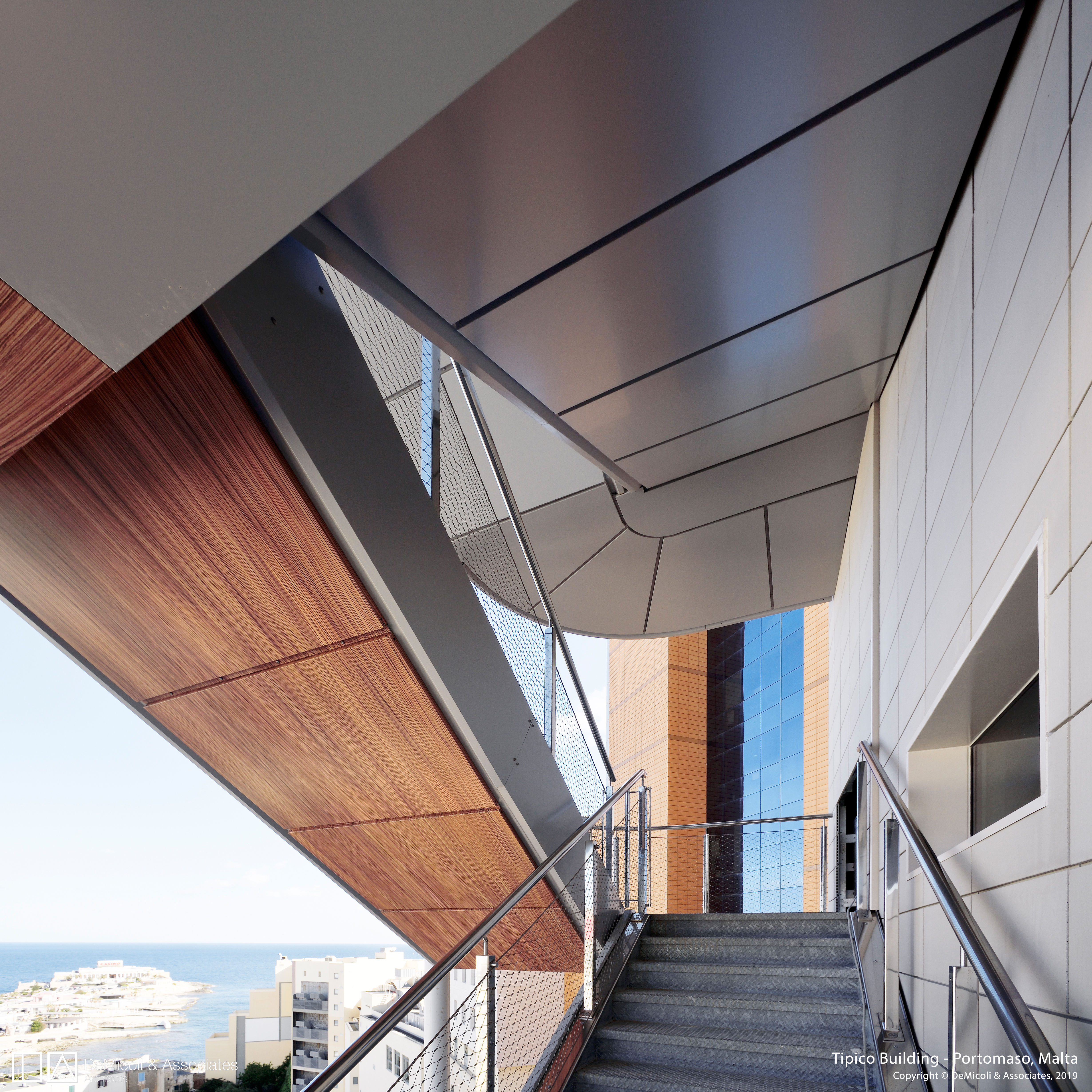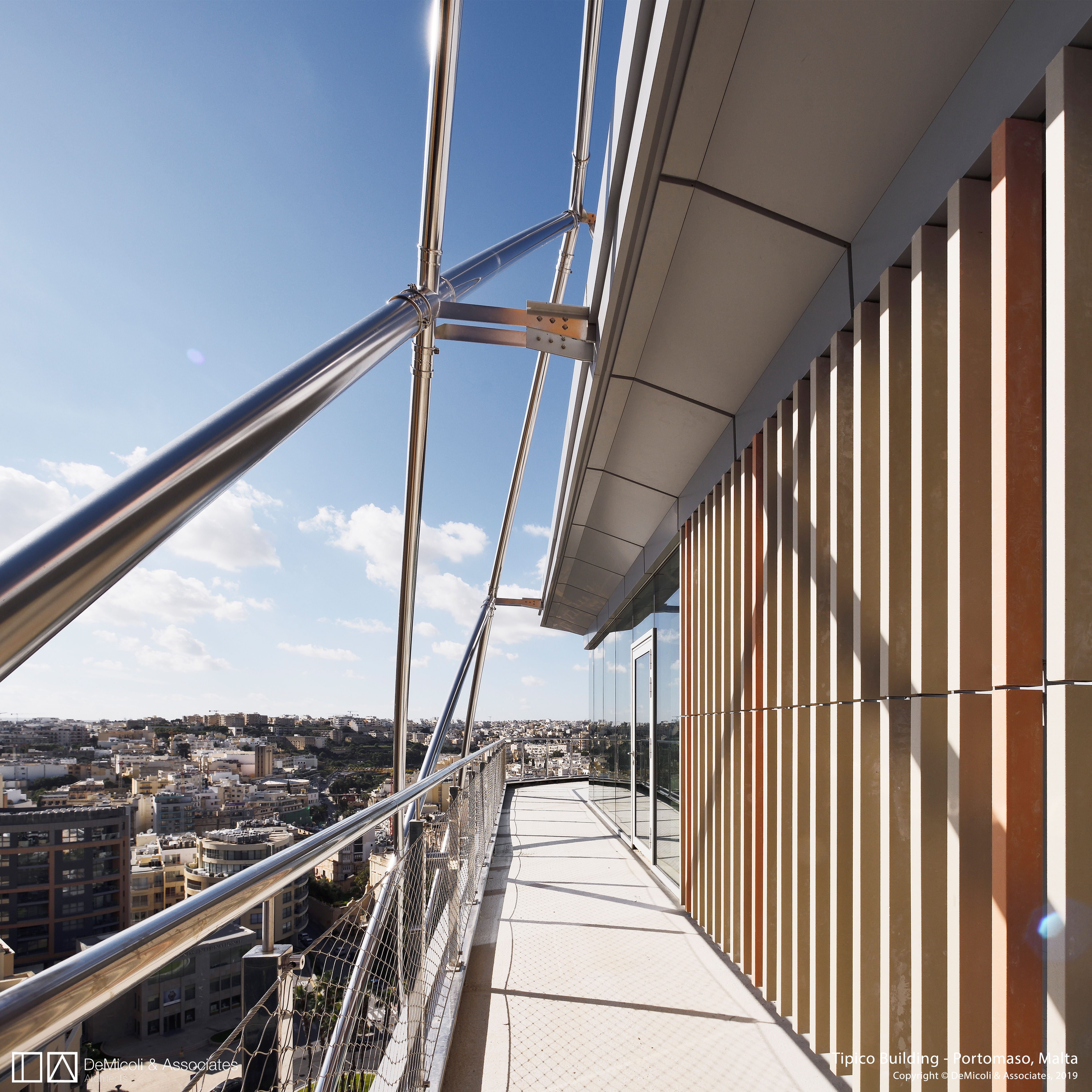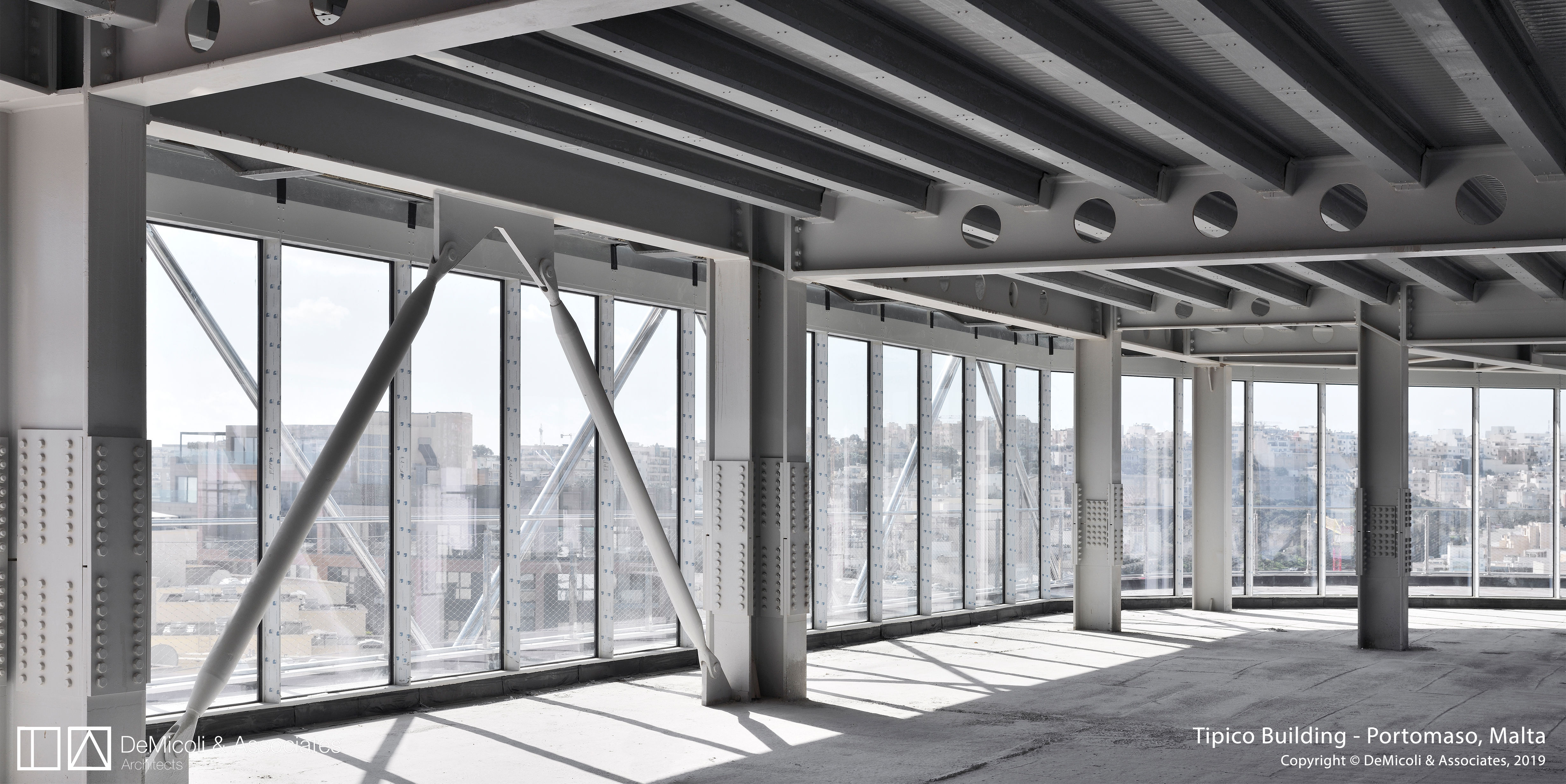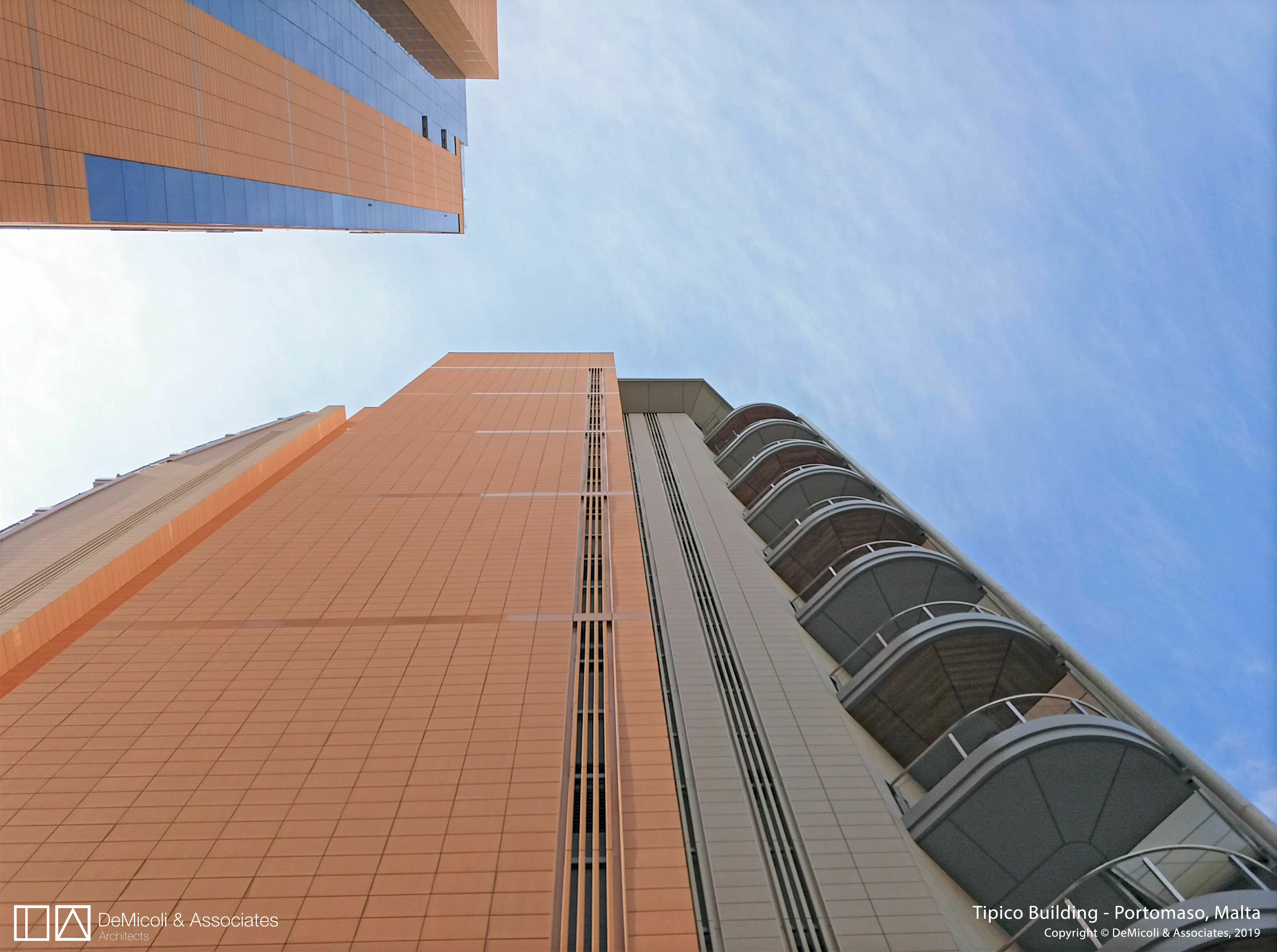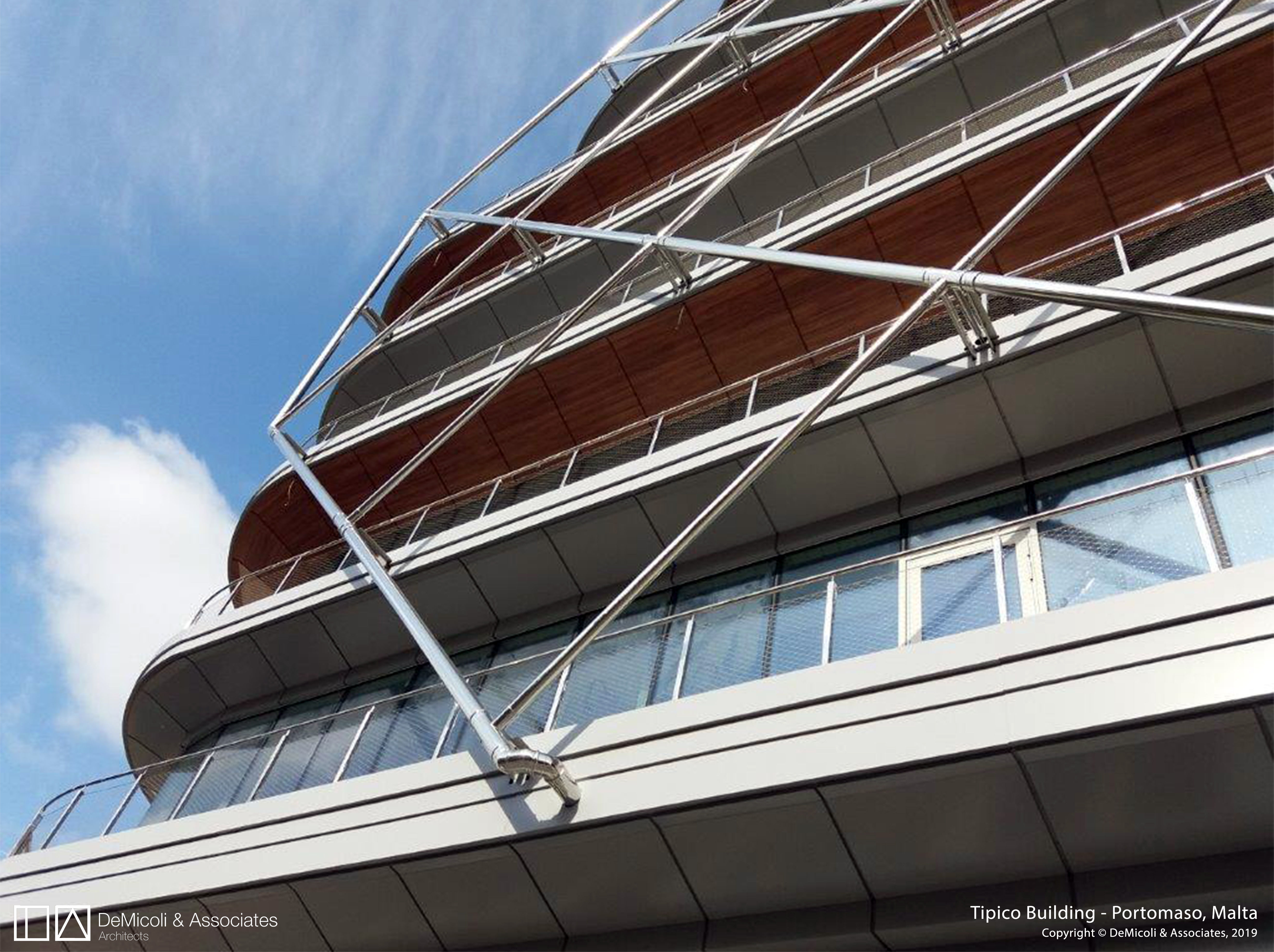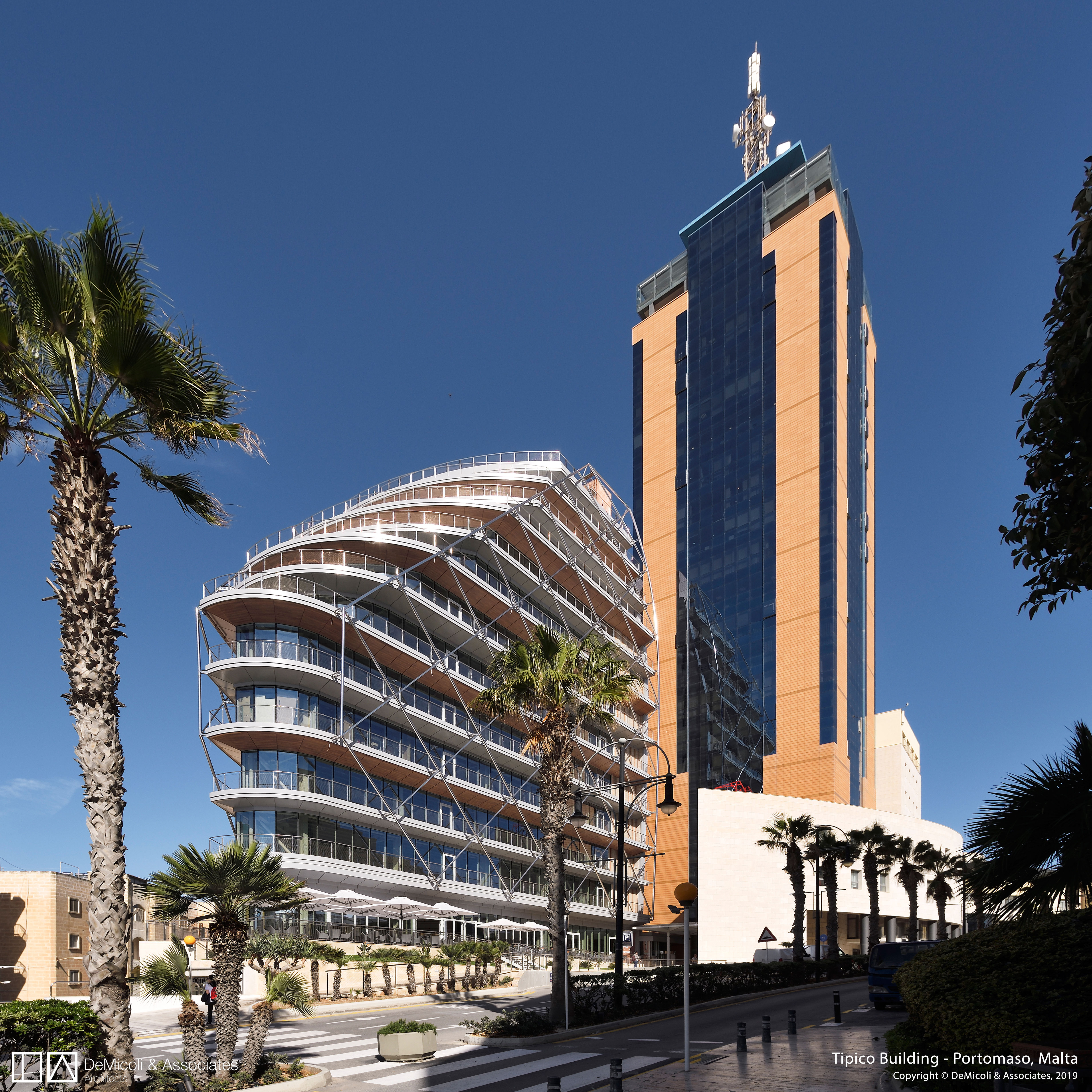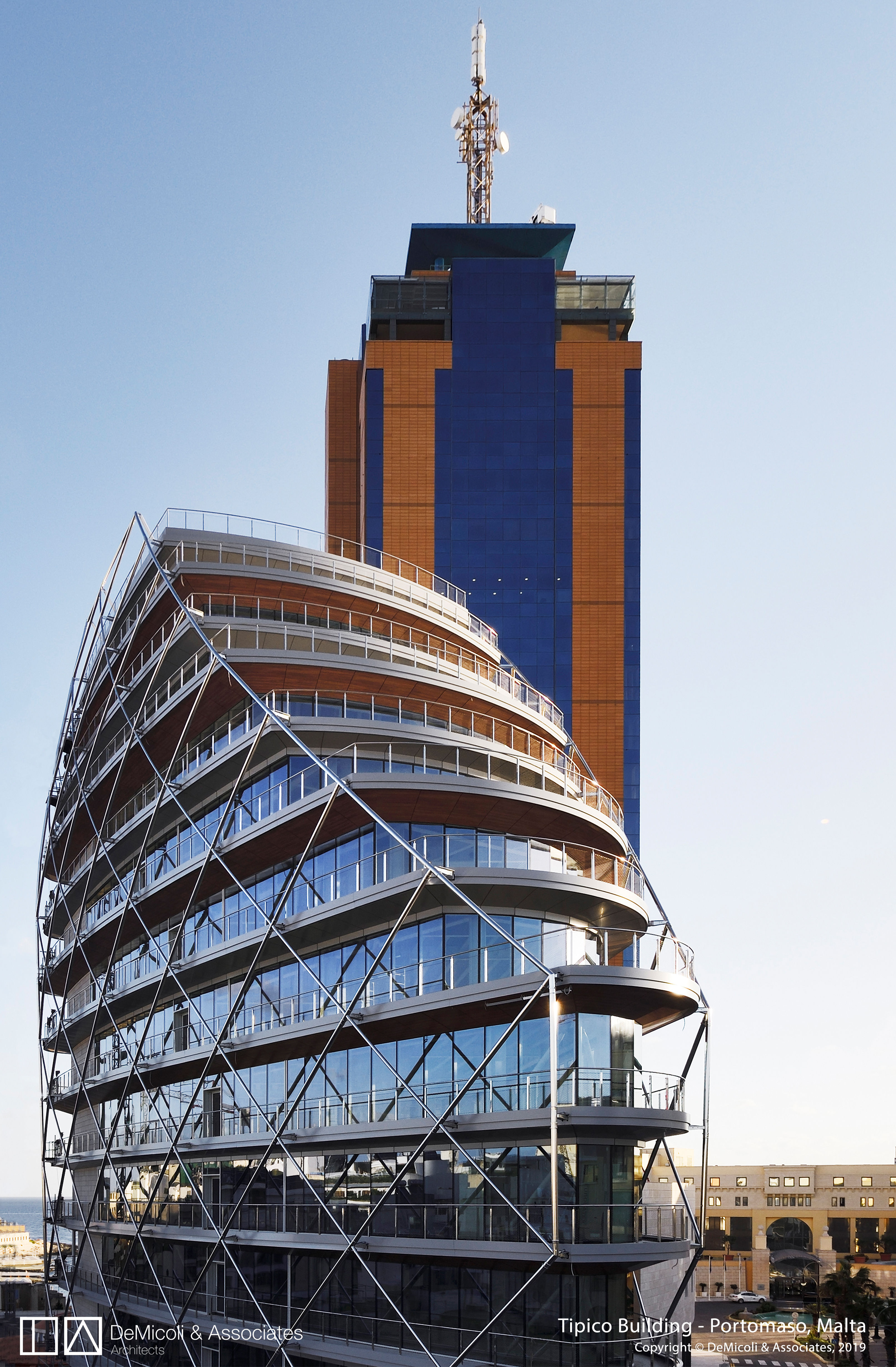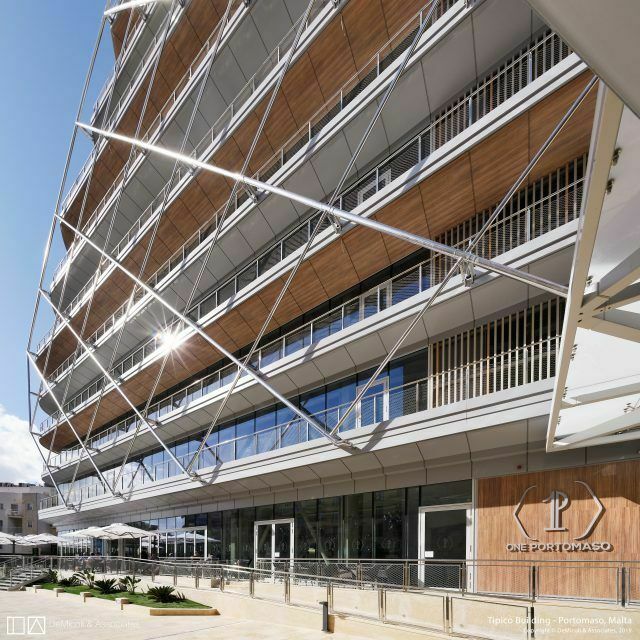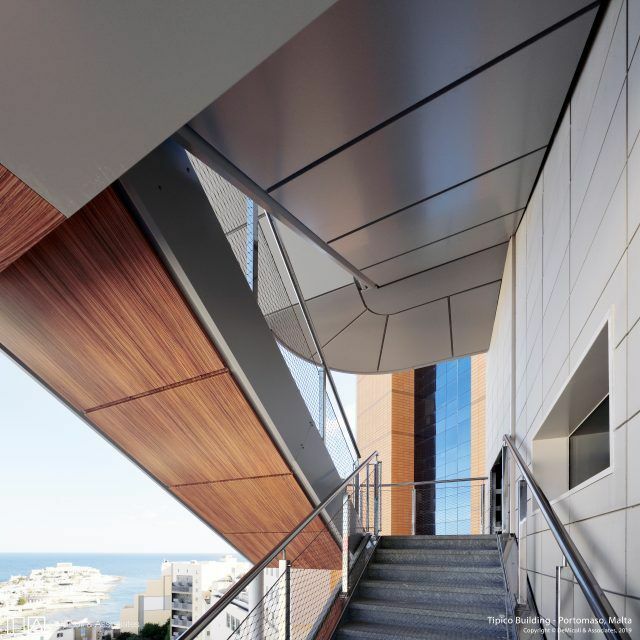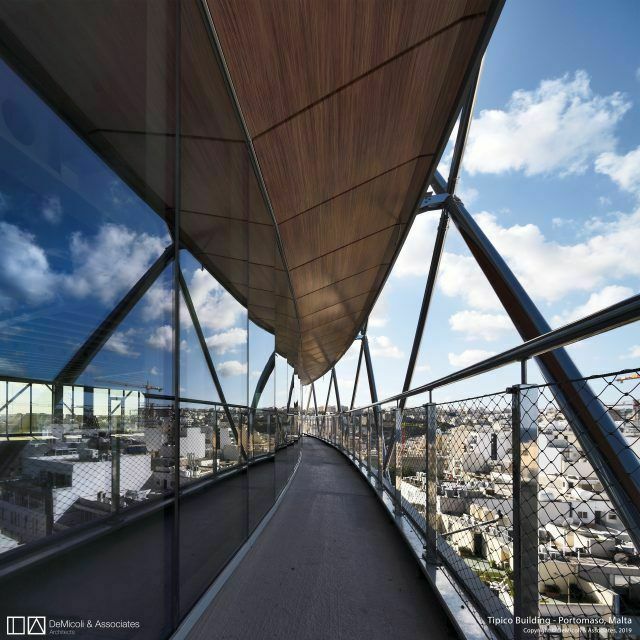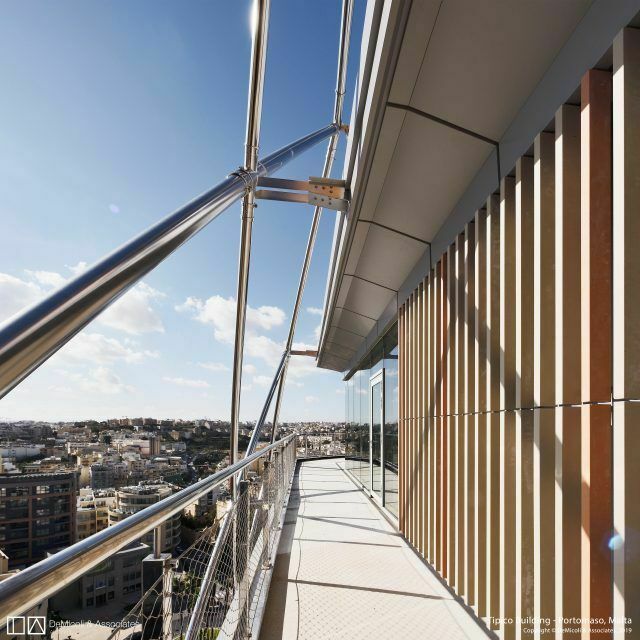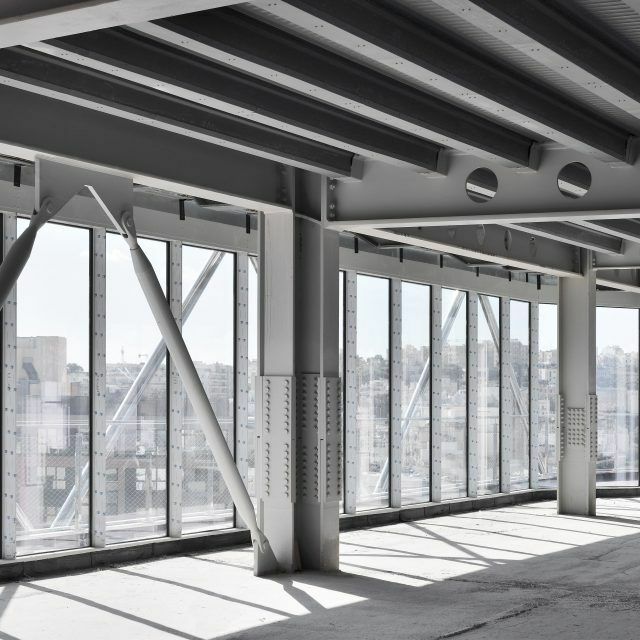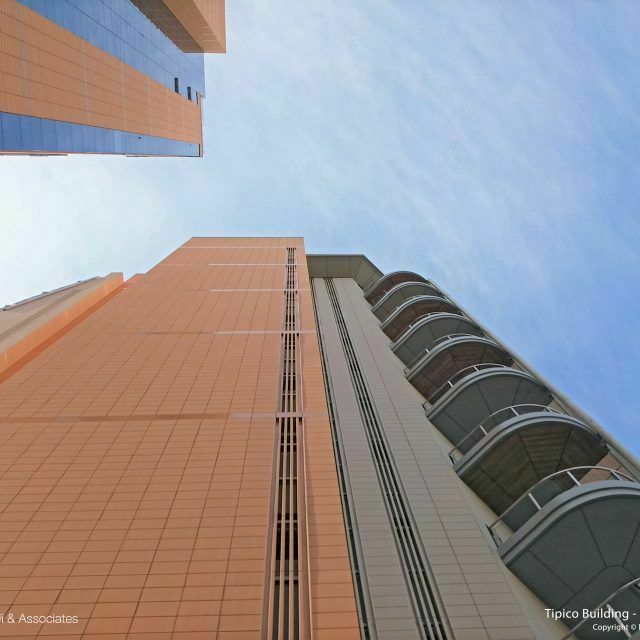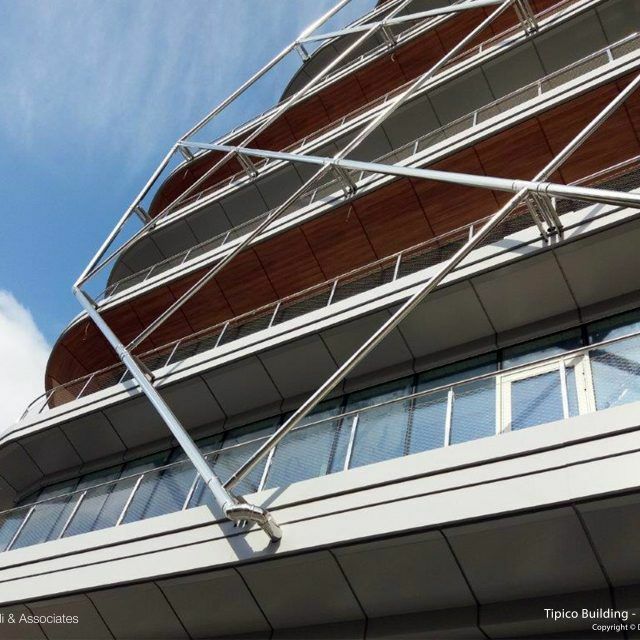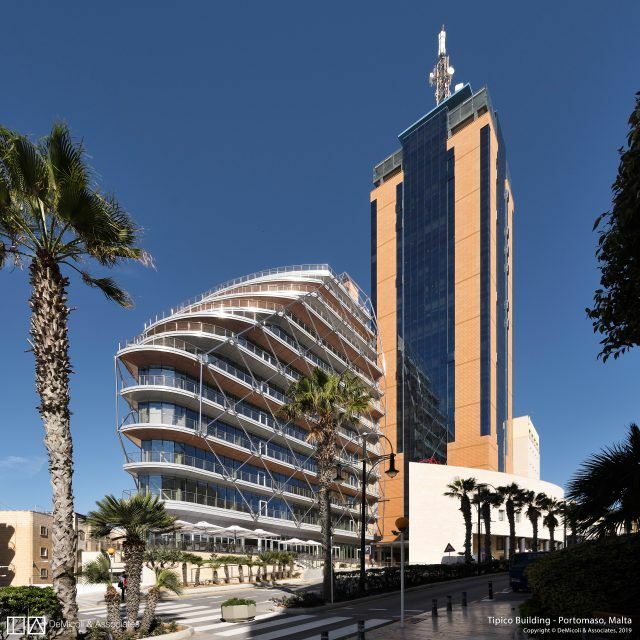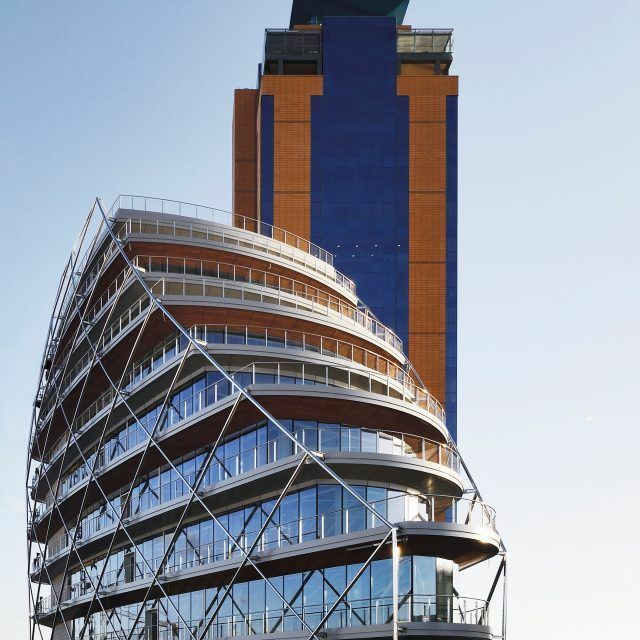DeMicoli & Associates
- Project
- Tipico Building
Tipico Building
Portomaso St. Julians
The project consisted of the redevelopment of a site in Portomaso, formally occupied by Portomaso Café; a single story steel frame structure, adjacent to the Portomaso Tower, the iconic and tallest skyscraper on the island of Malta.
The project was first initiated by Tumas Group Director Ray Fenech, in response to the increasing demand for Class A offices in the St.Julians and Portomaso catchment area.
The building footprint, wedge-like in form, comprised of a 530 m² area at the intersection of two sloping roads with a difference of height of 7.40 meters. Below the existing site lay three underground floors of car park (Level -5 to -3), a supermarket (Level -2) and a shopping centre (Level -1).
The first task entailed an extensive study to understand the possibilities of penetrating the 5 sub-levels with additional steel columns to reinforce the existing concrete columns. The augmented columns, on an irregular grid, were to extend up 11-storeys, becoming the superstructure for the Tipico Building. In contrast to the meticulously articulated grid layout and column reinforcing, various massing studies were carried out in parallel. The architectural massing concept was to create a soft counterpoint to the orthogonality of the Portomaso Tower, whilst leaving an open airy volume and unobstructed site lines of the two main axes leading to the Portomaso Marina and Hilton Hotel.
Two cardinal decisions emerged; the first being that the building floor plate should articulate the wedge-like footprint of the site and would terrace back as it rose.
The second was in relation to the neighbouring Portomaso Tower; that it should be softer, drawing out horizontal accents as opposed to vertical, and it should read as a lighter structure.
The building’s structure is a non-sway steel frame, using castellated beams to reduce the floor zone, and composite slab construction. The lateral stability of the structure was obtained via a combination of shear walls and steel K-bracing. This design was aimed to achieve a 10-working day construction cycle per level.
The envelope of the building consists of a double glazing façade, with sun-protective film, partially protected by balconies, but it lays behind a sail-shaped frame, that is the architectural mark of the building.
The double-curvature of the external diagrid was made possible through the use of stainless steel pipes whose main purpose was to drain rain water from all the balconies.
Due to its non-linear geometry, the design required precise coordination using 3D modelling to enable the customized production of every single pipe element. The underside of the balconies were clad in aluminium, and with their wood texture and the dedicated study of their lighting, add a warmer touch to the high-tech grid. The railing of balconies were in stainless steel mesh in order to reduce their visual impact. The building envelope on the north side is completed by a ventilated façade using brick proprietary terracotta tiles.



